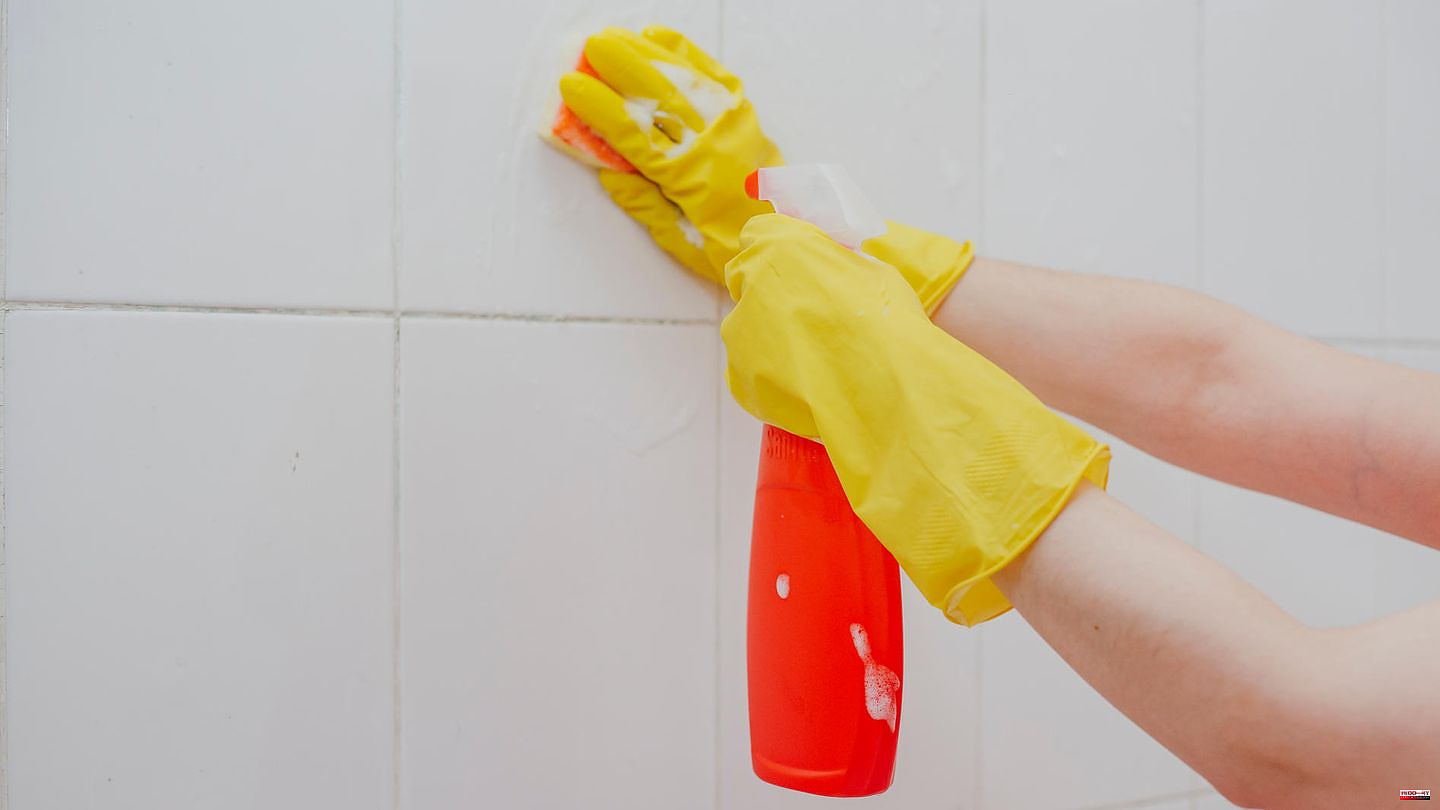Because of the constantly high humidity in the bathroom or particularly hard water, unsightly deposits build up on the joints, which provide an ideal breeding ground for mold. And even in the kitchen, the tiles are not safe from unsightly deposits: Here it is primarily grease and dirt residue that collects in the gaps when cooking. Unfortunately, these processes cannot be stopped, regardless of the room - but you can still clean the yellowed joints: either with a special cleaner or alternative (household) products. We'll tell you what they are.
A commercially available joint cleaner usually contains alkaline and grease-dissolving ingredients to remove dirt residue, oily deposits, soap residue and - depending on the manufacturer - also mold from the gaps. To do this, the agent must be sprayed directly onto the joints and left to work for several minutes (depending on the degree of dirt). The gaps should then be cleaned with a sponge, cloth or brush to remove stubborn dirt. At the end, the joints are rinsed with fresh water and the entire process is repeated again if the result is not satisfactory.
Toothbrushes are often used for cleaning the joints. Their small bristles fit perfectly into the gaps and can therefore reach all deposits - but the effort is enormous if you want to clean an entire tile. Distributing a grout cleaner is much easier with a special grout brush: it has more bristles than a toothbrush, is significantly larger and usually has a practical handle - like this model. Alternatively, you can also use the so-called Fugentorpedo, a special cleaning system that became known through the founding show "The Lion's Den".
And this is how the cleaning system works: By using industrial diamonds, which act as abrasives, surface and deep-seated contaminants are removed from the gaps. What this looks like in practice is explained in the following instructions.
Steam cleaner: Hot steam can be used to remove stubborn dirt from the joints. To use this method, you need a steam cleaner that you can operate by hand and thus treat individual joints selectively.
Dirt eraserThe fine-pored sponge is actually used to treat stains on the walls, but can also be used as a joint cleaner - at least for slight discoloration in the gaps.
Scouring milkAs the name suggests, this cleaning agent is used for scouring. This makes it easier to remove stubborn incrustations caused by the small polishing particles, including those that form in the joints.
Important note: Vinegar is a tried and tested home remedy that is often used as a grout cleaner. Please note, however, that not all surfaces can tolerate the acid - such as grout. The calcareous material would be attacked by the vinegar and become porous. For silicone joints, however, vinegar is very suitable for removing mold.
This article contains so-called affiliate links. Further information are available here.












